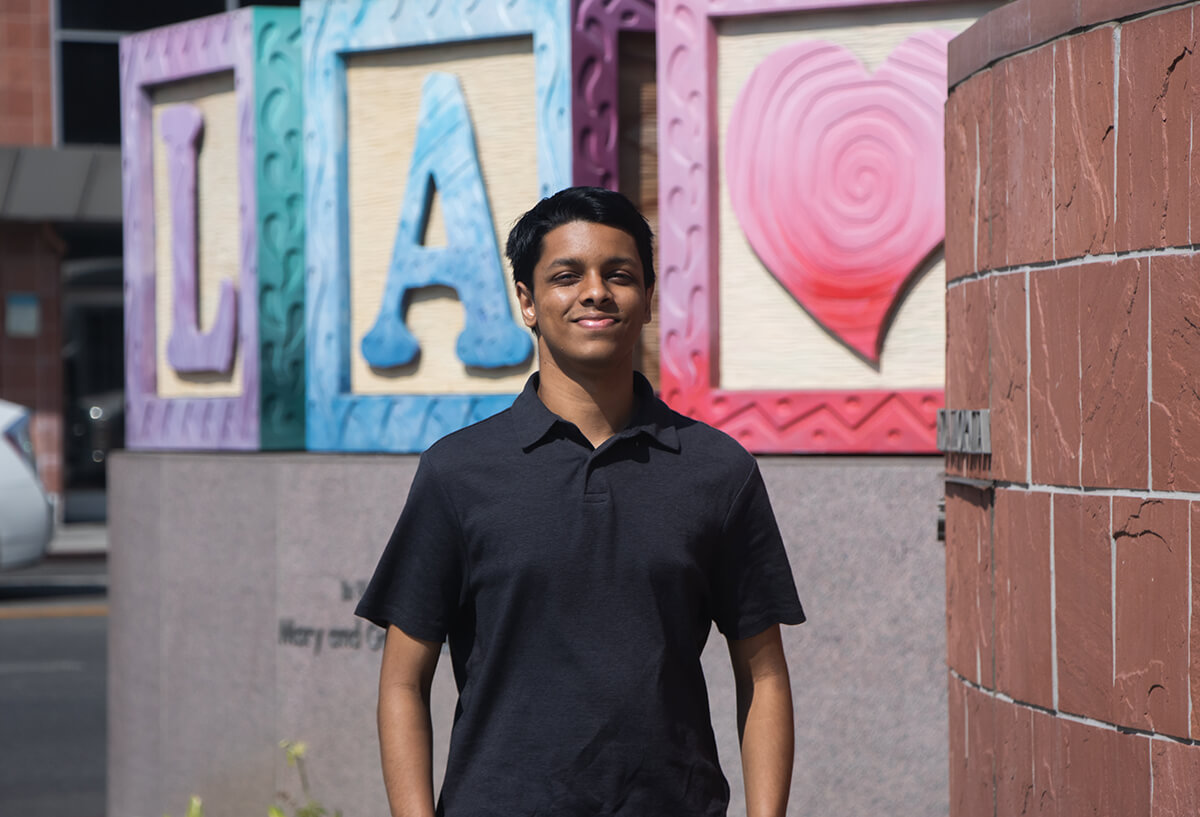The Viterbi Undergrad Who Changed Pediatric Cancer Treatment With an Algorithm
What did you do at 19?
Arjun Karnwal, a USC Viterbi undergraduate, has already seen his research make a real difference in the lives of young cancer patients in Los Angeles.
Karnwal, now a junior in the Alfred E. Mann Department of Biomedical Engineering, developed an algorithm that is revolutionizing cancer radiation treatments. His work has been deployed at Children’s Hospital Los Angeles (CHLA) and USC Norris Comprehensive Cancer Center, where it saves precious time for radiation oncologists, reducing errors and enhancing the effectiveness of therapies for vulnerable pediatric patients.
Radiation oncology harnesses high-energy radiation waves to shrink or eradicate tumors. It can be used as a stand-alone therapy or in combination with other treatments like chemotherapy. While traditional approaches deliver a uniform blast of radiation across the entire tumor, an increasingly promising technique is spatially fractionated radiation therapy (SFRT). This method takes a targeted approach, attacking the tumor with ultra-high doses of radiation at strategically preselected “hot spots” within the malignant tissue.

Karnwal, who has a background in taekwondo and kendo, likes to imagine the problem in martial arts terms. “When you’re trying to take down a person, you can flick them everywhere on their body in a uniform approach,” he said. “SFRT is like choosing a couple of weak points on a person and putting all your power into those, instead of just uniformly attacking everywhere.”
Karnwal added that concentrating high-radiation doses on specific points within the tumor helps clinicians avoid damage to the surrounding healthy tissue. However, the clinical application of SFRT presents a complex challenge: How do you maximize the number of hot spots within the tumor mass while ensuring the radiation remains a safe distance from organs?
Planning the safe maximum number of radiation hot spots for tumor treatments is a time-consuming process. Radiation oncologists must manually map each point, usually by creating a grid within the tumor — which would be fine if tumors were neat rectangular boxes.
Karnwal was determined to find a better way.
“I felt the grid system wouldn’t consistently yield the maximum number of effective targets. That’s what led me to think about randomness — or, in more sophisticated engineering terms, Monte Carlo simulation — running a process numerous times with an element of randomness incorporated, allowing us to simulate a wide range of potential outcomes and identify the best one,” Karnwal said.

With that in mind, he created a software script that seamlessly integrates with existing SFRT mapping programs. Clinicians can input their specific parameters — such as minimum distances between hot spots, and from hot spots to healthy tissue. The algorithm then calculates a multitude of randomized approaches, ultimately selecting the configuration that yields the maximum number of safe and effective targets in a tumor.
The impact on clinicians has been transformative. Supervising Karnwal’s work at CHLA was Kenneth Wong, associate professor of clinical radiation oncology at the Keck School of Medicine of USC. Manually constructing a radiation hot spot map previously took Wong’s team an average of two hours. Now they could do the same work in just eight minutes.
“His algorithm has significantly reduced the time it takes for patients to get a treatment that can shrink the size of a tumor that might be causing pain or other disability,” Wong said. “Not only is his algorithm so much faster, but we’re also able to ensure that high radiation doses don’t end up in areas where they should not be.”
Karnwal said this time-saving tool means that patients could now receive same-day treatment, which was often unfeasible before due to the lengthy planning and approval process.




